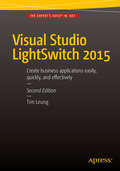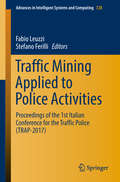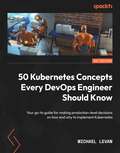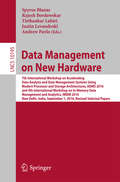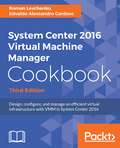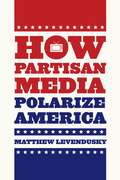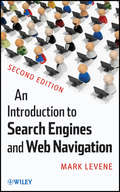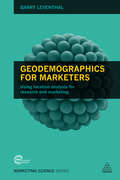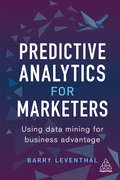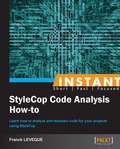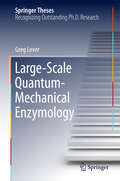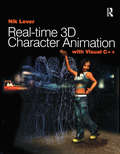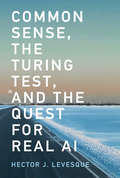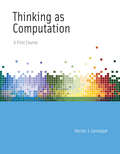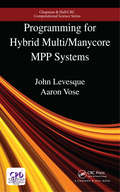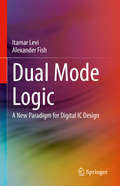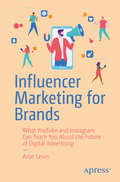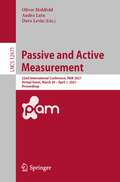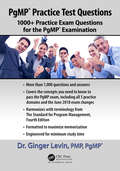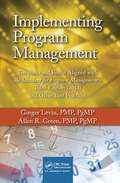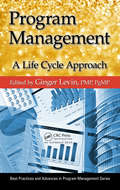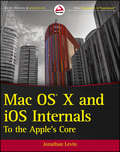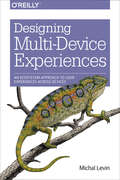- Table View
- List View
Visual Studio LightSwitch 2012
by Tim LeungLightSwitch 2012 is included as part of the Visual Studio 2012 package. It is a rapid application deployment tool that lets power users and administrators build data-centric business applications for the desktop, cloud, and Web in just a few clicks, with no code required. The basics are very easily understood but more advanced users will hunger for more: how do you design complex layouts? How do you query data using LINQ and other syntax structures? How do you secure your application against malicious use? Visual Studio LightSwitch 2012 answers these questions and more as author Tim Leung--winner of a Microsoft 2011 Community Contributor Award for his LightSwitch expertise--covers this breakthrough product in detail. For serious developers building, enhancing and deploying advanced business applications using LightSwitch makes sense because they can benefit from the elegance, convenience and cost savings afforded by rapid application development before going beyond the "click-and-you''re-done" interface to include the extra value and depth of coding expertise that their clients value. What you''ll learn With Visual Studio LightSwitch 2012, learn how to: Add visibility through with Relationships and Details screens Use customized queries, sorts and filters, and reporting Customize displays via user controls Use multiple line-of-business data sources to aggregate reports Handle events in code and debug applications Master the intricacies of complex user interface design Secure your applications through authentication Write custom . NET code to enhance LightSwitch Deploy maintainable LightSwitch projects Who this book is for Visual Studio LightSwitch 2012 is a book designed for any software developer who wants to take advantage of the rapid application deployment (RAD) experience offered by LightSwitch. It is ideal reading for those wanting to build and design applications correctly from the onset. Developers who have grasped the basics of LightSwitch and are looking to do more will benefit greatly from this book. Anyone struggling to design complex screens and queries in order to meet user requirements will find the answers in this book. Table of Contents Part One - Introducing LightSwitch: Understanding How LightSwitch Works Part One - Introducing LightSwitch: Setting Up Your data Part One - Introducing LightSwitch: Getting Started with Screen Design Part Two - Working With Data: Accessing Data from Code Part Two - Working With Data: Validating Your Data Part Two - Working With Data: Querying Your Data Part Three - Designing User Interfaces: Mastering Screen Design Part Three - Designing User Interfaces: Creating HTML User Interfaces Part Four - Extending the Reach of Your Data: Creating and Using RIA Services Part Four - Extending the Reach of Your Data: Sharing Data with Odata Part Five - Customizing LightSwitch: Creating and Using Silverlight Custom Controls Part Five - Customizing LightSwitch: Creating Custom Control Extensions Part Five - Customizing LightSwitch: Creating Data and Presentation Extensions Part Six - Getting Data Out: Creating and Displaying Reports Part Six - Getting Data Out: Creating and Sending Emails Part Seven - Securing Your Application: Authenticating Your Users Part Seven - Securing Your Application: Authorizing Your Users Part Eight - Going Live with Your Application: Deploying Your Application Appendix A Appendix B Appendix C Appendix D Appendix E
Traffic Mining Applied to Police Activities: Proceedings Of The 1st Italian Conference For The Traffic Police (trap 2017) (Advances In Intelligent Systems And Computing #728)
by Fabio Leuzzi Stefano FerilliThis book presents high-quality original contributions on the development of automatic traffic analysis systems that are able to not only anticipate traffic scenarios, but also understand the behavior of road users (vehicles, bikes, trucks, etc.) in order to provide better traffic management, prevent accidents and, potentially, identify criminal behaviors. Topics also include traffic surveillance and vehicle accident analysis using formal concept analysis, convolutional and recurrent neural networks, unsupervised learning and process mining. The content is based on papers presented at the 1st Italian Conference for the Traffic Police (TRAP), which was held in Rome in October 2017. This conference represents a targeted response to the challenges facing the police in connection with managing massive traffic data, finding patterns from historical datasets, and analyzing complex traffic phenomena in order to anticipate potential criminal behaviors. The book will appeal to researchers, practitioners and decision makers interested in traffic monitoring and analysis, traffic modeling and simulation, mobility and social data mining, as well as members of the police.
50 Kubernetes Concepts Every DevOps Engineer Should Know: Your go-to guide for making production-level decisions on how and why to implement Kubernetes
by Michael Levan Luca MassaronA must-have Kubernetes book to learn key concepts for succeeding in any production environment, be it a greenfield Kubernetes environment or your cloud-native journeyKey FeaturesAdvance in your Kubernetes journey with guidance from a seasoned k8s practitioner and trainerDiscover best practices for implementing Kubernetes in any production environmentGo beyond the basics and work with Kubernetes applications in every environmentBook DescriptionKubernetes is a trending topic among engineers, CTOs, CIOs, and other technically sound professionals. Due to its proliferation and importance for all cloud technologies, DevOps engineers nowadays need a solid grasp of key Kubernetes concepts to help their organization thrive.This book equips you with all the requisite information about how Kubernetes works and how to use it for the best results. You'll learn everything from why cloud native is important to implementing Kubernetes clusters to deploying applications in production. This book takes you on a learning journey, starting from what cloud native is and how to get started with Kubernetes in the cloud, on-premises, and PaaS environments such as OpenShift. Next, you'll learn about deploying applications in many ways, including Deployment specs, Ingress Specs, and StatefulSet specs. Finally, you'll be comfortable working with Kubernetes monitoring, observability, and security. Each chapter of 50 Kubernetes Concepts Every DevOps Engineer Should Know is built upon the previous chapter, ensuring that you develop practical skills as you work through the code examples in GitHub, allowing you to follow along while giving you practical knowledge.By the end of this book, you'll be able to implement Kubernetes in any environment, whether it's an existing environment, a greenfield environment, or your very own lab running in the cloud or your home.What you will learnFind out how Kubernetes works on-premises, in the cloud, and in PaaS environmentsWork with networking, cluster management, and application deploymentUnderstand why cloud native is crucial for Kubernetes applicationsDeploy apps in different states, including Stateless and StatefulMonitor and implement observability in your environmentExplore the functioning of Kubernetes security at the cluster, user, and application levelWho this book is forThis book is for cloud engineers, developers, DevOps engineers, and infrastructure engineers responsible for inheriting a Kubernetes environment or creating a greenfield Kubernetes environment. If you are a professional who wants to get started with cloud-native applications and implement k8s best practices, then this book is a must-read. If you have engineered environments in the cloud and on-premises and understand how to deploy applications with a solid tenure in a developer role, this book will help you further your skills.
Data Management on New Hardware: 7th International Workshop on Accelerating Data Analysis and Data Management Systems Using Modern Processor and Storage Architectures, ADMS 2016 and 4th International Workshop on In-Memory Data Management and Analytics, IMDM 2016, New Delhi, India, September 1, 2016, Revised Selected Papers (Lecture Notes in Computer Science #10195)
by Justin Levandoski Andrew Pavlo Spyros Blanas Rajesh Bordawekar Tirthankar LahiriThis book contains selected papers from the 7th International Workshop on Accelerating Analytics and Data Management Systems Using Modern Processor and Storage Architectures, ADMS 2016, and the 4th International Workshop on In-Memory Data Management and Analytics, IMDM 2016, held in New Dehli, India, in September 2016. The joint Workshops were co-located with VLDB 2016. The 9 papers presented were carefully reviewed and selected from 18 submissions. They investigate opportunities in accelerating analytics/data management systems and workloads (including traditional OLTP, data warehousing/OLAP, ETL streaming/real-time, business analytics, and XML/RDF processing) running memory-only environments, using processors (e. g. commodity and specialized multi-core, GPUs and FPGAs, storage systems (e. g. storage-class memories like SSDs and phase-change memory), and hybrid programming models like CUDA, OpenCL, and Open ACC. The papers also explore the interplay between overall system design, core algorithms, query optimization strategies, programming approaches, performance modeling and evaluation, from the perspective of data management applications.
System Center 2016 Virtual Machine Manager Cookbook, Third Edition: Design, Configure, And Manage An Efficient Virtual Infrastructure With Vmm In System Center 2016
by Roman LevchenkoMicrosoft System Center Virtual Machine Manager (SCVMM) focuses on efficiency with multiple features to help administrators consolidate physical servers within a centrally virtualized environment. This book will allow you to implement the Microsoft System Center family of components effectively and efficiently.
How Partisan Media Polarize America
by Matthew LevenduskyForty years ago, viewers who wanted to watch the news could only choose from among the major broadcast networks, all of which presented the same news without any particular point of view. Today we have a much broader array of choices, including cable channels offering a partisan take. With partisan programs gaining in popularity, some argue that they are polarizing American politics, while others counter that only a tiny portion of the population watches such programs and that their viewers tend to already hold similar beliefs. <P><P> In How Partisan Media Polarize America, Matthew Levendusky confirms--but also qualifies--both of these claims. Drawing on experiments and survey data, he shows that Americans who watch partisan programming do become more certain of their beliefs and less willing to weigh the merits of opposing views or to compromise. And while only a small segment of the American population watches partisan media programs, those who do tend to be more politically engaged, and their effects on national politics are therefore far-reaching. <P>< In a time when politics seem doomed to partisan discord, How Partisan Media Polarize America offers a much-needed clarification of the role partisan media might play.
How Partisan Media Polarize America (Chicago Studies In American Politics Ser.)
by Matthew LevenduskyForty years ago, viewers who wanted to watch the news could only choose from among the major broadcast networks, all of which presented the same news without any particular point of view. Today we have a much broader array of choices, including cable channels offering a partisan take. With partisan programs gaining in popularity, some argue that they are polarizing American politics, while others counter that only a tiny portion of the population watches such programs and that their viewers tend to already hold similar beliefs. In How Partisan Media Polarize America, Matthew Levendusky confirms—but also qualifies—both of these claims. Drawing on experiments and survey data, he shows that Americans who watch partisan programming do become more certain of their beliefs and less willing to weigh the merits of opposing views or to compromise. And while only a small segment of the American population watches partisan media programs, those who do tend to be more politically engaged, and their effects on national politics are therefore far-reaching. In a time when politics seem doomed to partisan discord, How Partisan Media Polarize America offers a much-needed clarification of the role partisan media might play.
An Introduction to Search Engines and Web Navigation
by Mark LeveneThis book is a second edition, updated and expanded to explain the technologies that help us find information on the web. Search engines and web navigation tools have become ubiquitous in our day to day use of the web as an information source, a tool for commercial transactions and a social computing tool. Moreover, through the mobile web we have access to the web's services when we are on the move. This book demystifies the tools that we use when interacting with the web, and gives the reader a detailed overview of where we are and where we are going in terms of search engine and web navigation technologies.
Geodemographics for Marketers
by Barry LeventhalGeodemographics, the process of analyzing survey data to profile economic and demographic characteristics of populations, is a successful data-driven analysis tool for marketers. Geodemographic classifications are widely embedded in customer databases and market research datasets. Written by a leading UK authority on geodemographics, Geodemographics for Marketers provides marketers with the know-how to leverage it as an effective research tool to identify location-based segments for highly targeted marketing. International in scope and impartial in its approach, this book demonstrates how to implement geodemographics techniques for practical application in retail, financial services and telecommunications as well as the public sector. Geodemographics for Marketers includes numerous case studies, from the automotive, retail and telecommunications sectors to the public sector, that illustrate core concepts and how they can be applied to gain positive results. The book also incorporates the newly introduced generation of classifications, as well as a discussion of the key decisions of the proposed 2021 census.
Predictive Analytics for Marketers: Using Data Mining for Business Advantage
by Barry LeventhalPredictive Analytics has revolutionised marketing practice. It involves using many techniques from data mining, statistics, modelling, machine learning and artificial intelligence, to analyse current data and make predictions about unknown future events. In business terms, this enables companies to forecast consumer behaviour and much more. Predictive Analytics for Marketers will guide marketing professionals on how to apply predictive analytical tools to streamline business practices. Including comprehensive coverage of an array of predictive analytic tools and techniques, this book enables readers to harness patterns from past data, to make accurate and useful predictions that can be converted to business success. Truly global in its approach, the insights these techniques offer can be used to manage resources more effectively across all industries and sectors. Written in clear, non-technical language, Predictive Analytics for Marketers contains case studies from the author's more than 25 years of experience and articles from guest contributors, demonstrating how predictive analytics has been used to successfully achieve a range of business purposes.
Instant StyleCop Code Analysis How-to
by Franck LevequeFilled with practical, step-by-step instructions and clear explanations for the most important and useful tasks.The book will take a how-to approach, focusing on recipes that demonstrate Stylecop code analysis.Stylecop Code Analysis How-to is intended for developers and project managers who are looking for an all-encompassing overview of Stylecop to display or enforce their specific coding conventions. It is assumed that you have a minimal understanding of integration technologies such as MSBuild and Nant. You should also have some knowledge on how to program in C# and LINQ. An available version of Visual Studio 2008 professional or superior is also required to follow the first chapters of this book.
Large-Scale Quantum-Mechanical Enzymology
by Greg LeverThis work establishes linear-scaling density-functional theory (DFT) as a powerful tool for understanding enzyme catalysis, one that can complement quantum mechanics/molecular mechanics (QM/MM) and molecular dynamics simulations. The thesis reviews benchmark studies demonstrating techniques capable of simulating entire enzymes at the ab initio quantum-mechanical level of accuracy. DFT has transformed the physical sciences by allowing researchers to perform parameter-free quantum-mechanical calculations to predict a broad range of physical and chemical properties of materials. In principle, similar methods could be applied to biological problems. However, even the simplest biological systems contain many thousands of atoms and are characterized by extremely complex configuration spaces associated with a vast number of degrees of freedom. The development of linear-scaling density-functional codes makes biological molecules accessible to quantum-mechanical calculation, but has yet to resolve the complexity of the phase space. Furthermore, these calculations on systems containing up to 2,000 atoms can capture contributions to the energy that are not accounted for in QM/MM methods (for which the Nobel prize in Chemistry was awarded in 2013) and the results presented here reveal profound shortcomings in said methods.
Real-time 3D Character Animation with Visual C++
by Nik LeverDo you have some experience and a reasonable knowledge of C++ and want to write your own computer games? Have you ever looked at a PC or Playstation (R) game with characters running and leaping through an exciting landscape and wondered how it was done? If so then this book will give you all the information you need to achieve this goal, whether you are a hobby programmer, student or even a professional wanting to add that third dimension to your website.Nik Lever takes you through the journey from the basics of 3D manipulation all the way to morph objects and sub-division surfaces. On the way you get Visual C++ project files to study and software that runs on the Windows desktop. The free CD-ROM gives you a full-featured development environment for 3D character animation, so even if you find some of the maths and the code hard to follow straight away you can still create your own games. The game engine (Toon3DCreator) provided free and fully functional on the CD-ROM, even has an ActiveX control that allows you to distribute your work on the Internet. All source code for Toon3D is included on the CD. You will also get an insight into the artist's problems; learn how to keep the characters interesting while not exhausting the game engine. Understand the complete picture and make the most of your skills to help you succeed in, or break into the computer gaming industry with this comprehensive guide to programming for real-time 3D character animation.
Common Sense, the Turing Test, and the Quest for Real AI
by Hector J. LevesqueWhat artificial intelligence can tell us about the mind and intelligent behavior. What can artificial intelligence teach us about the mind? If AI's underlying concept is that thinking is a computational process, then how can computation illuminate thinking? It's a timely question. AI is all the rage, and the buzziest AI buzz surrounds adaptive machine learning: computer systems that learn intelligent behavior from massive amounts of data. This is what powers a driverless car, for example. In this book, Hector Levesque shifts the conversation to “good old fashioned artificial intelligence,” which is based not on heaps of data but on understanding commonsense intelligence. This kind of artificial intelligence is equipped to handle situations that depart from previous patterns—as we do in real life, when, for example, we encounter a washed-out bridge or when the barista informs us there's no more soy milk. Levesque considers the role of language in learning. He argues that a computer program that passes the famous Turing Test could be a mindless zombie, and he proposes another way to test for intelligence—the Winograd Schema Test, developed by Levesque and his colleagues. “If our goal is to understand intelligent behavior, we had better understand the difference between making it and faking it,” he observes. He identifies a possible mechanism behind common sense and the capacity to call on background knowledge: the ability to represent objects of thought symbolically. As AI migrates more and more into everyday life, we should worry if systems without common sense are making decisions where common sense is needed.
Thinking as Computation: A First Course (The\mit Press Ser.)
by Hector J. LevesqueStudents explore the idea that thinking is a form of computation by learning to write simple computer programs for tasks that require thought. This book guides students through an exploration of the idea that thinking might be understood as a form of computation. Students make the connection between thinking and computing by learning to write computer programs for a variety of tasks that require thought, including solving puzzles, understanding natural language, recognizing objects in visual scenes, planning courses of action, and playing strategic games. The material is presented with minimal technicalities and is accessible to undergraduate students with no specialized knowledge or technical background beyond high school mathematics. Students use Prolog (without having to learn algorithms: “Prolog without tears!”), learning to express what they need as a Prolog program and letting Prolog search for answers.After an introduction to the basic concepts, Thinking as Computation offers three chapters on Prolog, covering back-chaining, programs and queries, and how to write the sorts of Prolog programs used in the book. The book follows this with case studies of tasks that appear to require thought, then looks beyond Prolog to consider learning, explaining, and propositional reasoning. Most of the chapters conclude with short bibliographic notes and exercises. The book is based on a popular course at the University of Toronto and can be used in a variety of classroom contexts, by students ranging from first-year liberal arts undergraduates to more technically advanced computer science students.
Programming for Hybrid Multi/Manycore MPP Systems (Chapman & Hall/CRC Computational Science)
by John Levesque Aaron Vose"Ask not what your compiler can do for you, ask what you can do for your compiler."--John Levesque, Director of Cray’s Supercomputing Centers of Excellence <P><P>The next decade of computationally intense computing lies with more powerful multi/manycore nodes where processors share a large memory space. These nodes will be the building block for systems that range from a single node workstation up to systems approaching the exaflop regime. The node itself will consist of 10’s to 100’s of MIMD (multiple instruction, multiple data) processing units with SIMD (single instruction, multiple data) parallel instructions. Since a standard, affordable memory architecture will not be able to supply the bandwidth required by these cores, new memory organizations will be introduced. These new node architectures will represent a significant challenge to application developers. <P><P>Programming for Hybrid Multi/Manycore MPP Systems attempts to briefly describe the current state-of-the-art in programming these systems, and proposes an approach for developing a performance-portable application that can effectively utilize all of these systems from a single application. The book starts with a strategy for optimizing an application for multi/manycore architectures. It then looks at the three typical architectures, covering their advantages and disadvantages. <P><P>The next section of the book explores the other important component of the target—the compiler. The compiler will ultimately convert the input language to executable code on the target, and the book explores how to make the compiler do what we want. The book then talks about gathering runtime statistics from running the application on the important problem sets previously discussed. <P><P>How best to utilize available memory bandwidth and virtualization is covered next, along with hybridization of a program. The last part of the book includes several major applications, and examines future hardware advancements and how the application developer may prepare for those advancements.
Dual Mode Logic: A New Paradigm for Digital IC Design
by Itamar Levi Alexander FishThis book presents Dual Mode Logic (DML), a new design paradigm for digital integrated circuits. DML logic gates can operate in two modes, each optimized for a different metric. Its on-the-fly switching between these operational modes at the gate, block and system levels provide maximal E-D optimization flexibility. Each highly detailed chapter has multiple illustrations showing how the DML paradigm seamlessly implements digital circuits that dissipate less energy while simultaneously improving performance and reducing area without a significant compromise in reliability. All the facets of the DML methodology are covered, starting from basic concepts, through single gate optimization, general module optimization, design trade-offs and new ways DML can be integrated into standard design flows using standard EDA tools. DML logic is compatible with numerous applications but is particularly advantageous for ultra-low power, reliable high performance systems, and advanced scaled technologies Written in language accessible to students and design engineers, each topic is oriented toward immediate application by all those interested in an alternative to CMOS logic.Describes a novel, promising alternative to conventional CMOS logic, known as Dual Mode Logic (DML), with which a single gate can be operated selectively in two modes, each optimized for a different metric (e.g., energy consumption, performance, size);Demonstrates several techniques at the architectural level, which can result in high energy savings and improved system performance;Focuses on the tradeoffs between power, area and speed including optimizations at the transistor and gate level, including alternatives to DML basic cells;Illustrates DML efficiency for a variety of VLSI applications.
Influencer Marketing for Brands: What YouTube and Instagram Can Teach You About the Future of Digital Advertising
by Aron LevinIn the next few years, brands are on track to spend billions of dollars on influencer marketing. This form of marketing—currently utilized with great success on Instagram and YouTube—is not a short-lived fad, but a tectonic shift for the future of digital advertising. It's the way of the future, and the responsibility is on business leaders to keep up.Modern marketing professionals looking to adopt influencer marketing for their brands face equally modern challenges. Like finding the right talent, tracking and measuring results and quantifying how this new marketing opportunity aligns with the overall strategy. Influencer Marketing for Brands is the field guide for the digital age. After working with hundreds of brands from across the globe, author Aron Levin shares his insider knowledge gained from research, strategy, and hands-on experience from more than 10,000 successful collaborations with influencers on Instagram and YouTube. He provides you with valuable insights that help you eliminate guesswork and avoid common mistakes. More importantly, he shows you how to turn influencer marketing into a scalable and sustainable marketing channel. The digital media landscape grows more complicated by the hour, and influencer marketing is no exception. Influencer Marketing for Brands breaks down the art and science of influencer marketing and helps you synthesize, contextualize and transform this new way of creating and distributing content with powerful formulas, proven strategies, and real-world examples.What You Will LearnPlan effective influencer marketing campaigns using a simple 3-step formulaCreate top performing YouTube videos that drive website traffic, app installs and salesUnderstand what to pay for influencer marketing and how much you should invest if you're just starting out Who This Book is ForMarketing and agency professionals, influencers and content creators, marketing students, those who are looking for more effective forms of advertising and are generally interested in understanding the new and evolving digital media landscape.
Passive and Active Measurement: 22nd International Conference, PAM 2021, Virtual Event, March 29 – April 1, 2021, Proceedings (Lecture Notes in Computer Science #12671)
by Dave Levin Oliver Hohlfeld Andra LutuThis book constitutes the proceedings of the 22nd Conference on Passive and Active Measurement, PAM 2021, which was planned to be held in Cottbus, Germany, in March 2021. Due to the Corona pandemic, the conference was organized as a virtual meeting. The 33 full papers presented in this volume were carefully reviewed and selected from 75 submissions. They were organized in topical sections named: COVID-19; web security; video streaming; TLS; staying connected; DoS; performance; network security; DNS; capacity; and exposing hidden behaviors. Due to the Corona pandemic, PAM 2021 was held as a virtual conference.
PgMP Practice Test Questions: 1000+ Practice Exam Questions for the PgMP Examination
by Ginger LevinUp to date with the fourth edition of PMI’s Program Management Standard, PgMP® Practice Test Questions: 1000+ Practice Exam Questions for the PgMP® Examination contains more than 1,000 practice questions to help readers hone their knowledge and test their skills. It covers all five of the program management domains: Strategic Program Management, Program Management Life Cycle, Benefits Management, Stakeholder Management, and Governance. It also examines all of the sub domains of the lifecycle domain. With an easy-to-use format, this is an ideal resource for those preparing to take the PgMP® exam.
Implementing Program Management: Templates and Forms Aligned with the Standard for Program Management, Third Edition (2013) and Other Best Practices (Best Practices And Advances In Program Management Ser. #6)
by Ginger Levin Allen R. GreenSuccess in program management requires discipline, complete plans, well-run meetings, accurate record keeping, and adherence to global best practices. Implementing Program Management: Templates and Forms Aligned with the Standard for Program Management, Third Edition (2013) and Other Best Practices provides the templates and guidelines for the plan
Program Management: A Life Cycle Approach (Best Practices In Portfolio, Program, And Project Management Ser.)
by Ginger Levin Pmp PgMPProgram management is a rapidly emerging offshoot of project management. So much so that AT&T, IBM, and other organizations, both large and small in all sectors, have initiated a push to certify program managers. And, although universities offer courses in program management, there are few books available to guide program managers through this
Code as Creative Medium: A Handbook for Computational Art and Design
by Golan Levin Tega BrainAn essential guide for teaching and learning computational art and design: exercises, assignments, interviews, and more than 170 illustrations of creative work.This book is an essential resource for art educators and practitioners who want to explore code as a creative medium, and serves as a guide for computer scientists transitioning from STEM to STEAM in their syllabi or practice. It provides a collection of classic creative coding prompts and assignments, accompanied by annotated examples of both classic and contemporary projects, and more than 170 illustrations of creative work, and features a set of interviews with leading educators. Picking up where standard programming guides leave off, the authors highlight alternative programming pedagogies suitable for the art- and design-oriented classroom, including teaching approaches, resources, and community support structures.
Mac OS X and iOS Internals
by Jonathan LevinAn in-depth look into Mac OS X and iOS kernelsPowering Macs, iPhones, iPads and more, OS X and iOS are becoming ubiquitous. When it comes to documentation, however, much of them are shrouded in mystery. Cocoa and Carbon, the application frameworks, are neatly described, but system programmers find the rest lacking. This indispensable guide illuminates the darkest corners of those systems, starting with an architectural overview, then drilling all the way to the core.Provides you with a top down view of OS X and iOSWalks you through the phases of system startup--both Mac (EFi) and mobile (iBoot)Explains how processes, threads, virtual memory, and filesystems are maintainedCovers the security architectureReviews the internal Apis used by the system--BSD and MachDissects the kernel, XNU, into its sub components: Mach, the BSD Layer, and I/o kit, and explains each in detailExplains the inner workings of device driversFrom architecture to implementation, this book is essential reading if you want to get serious about the internal workings of Mac OS X and iOS.
Designing Multi-Device Experiences: An Ecosystem Approach to User Experiences across Devices
by Michal LevinWelcome to our multi-device world, a world where a user's experience with one application can span many devices--a smartphone, a tablet, a computer, the TV, and beyond. This practical book demonstrates the variety of ways devices relate to each other, combining to create powerful ensembles that deliver superior, integrated experiences to your users. Learn a practical framework for designing multi-device experiences, based on the 3Cs--Consistent, Complementary, and Continuous approaches Graduate from offering everything on all devices, to delivering the right thing, at the right time, on the best (available) device Apply the 3Cs framework to the broader realm of the Internet of Things, and design multi-device experiences that anticipate a fully connected world Learn how to measure your multi-device ecosystem performance Get ahead of the curve by designing for a more connected future
